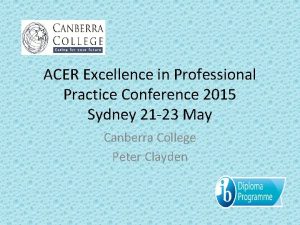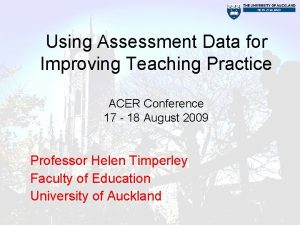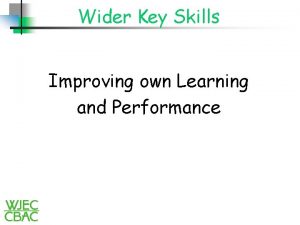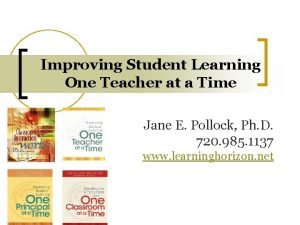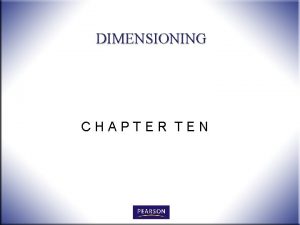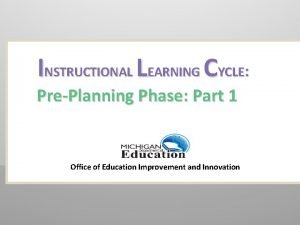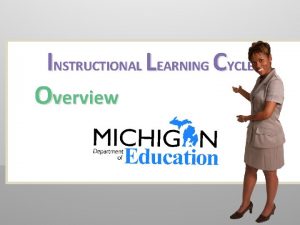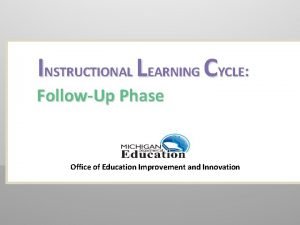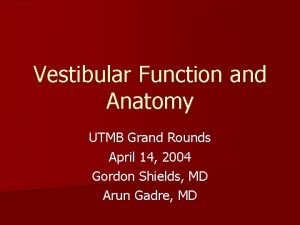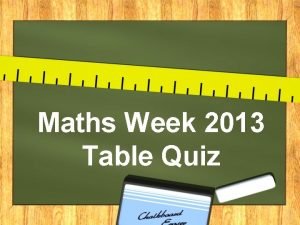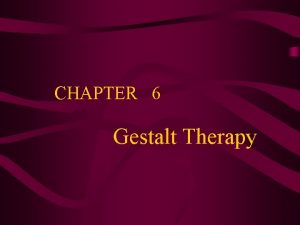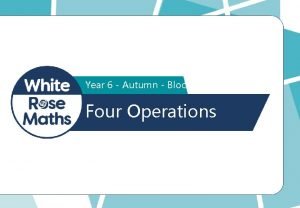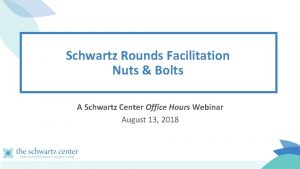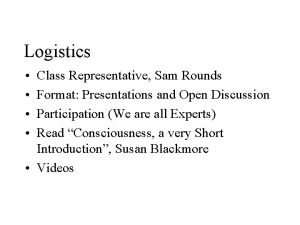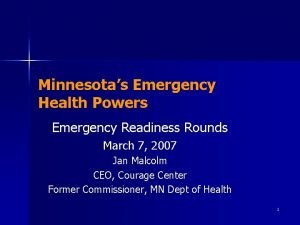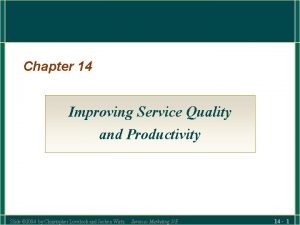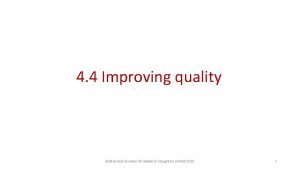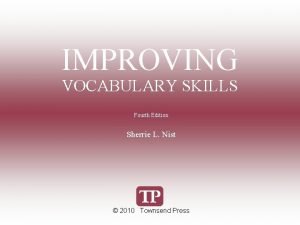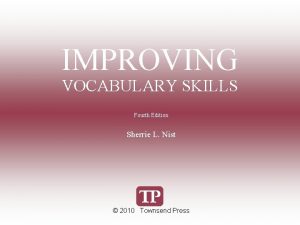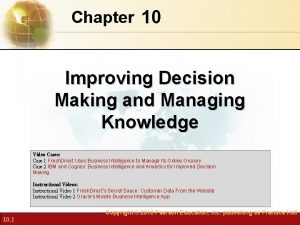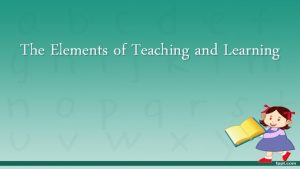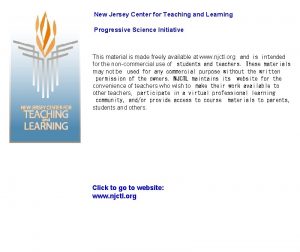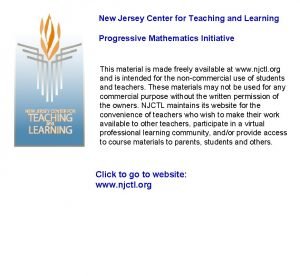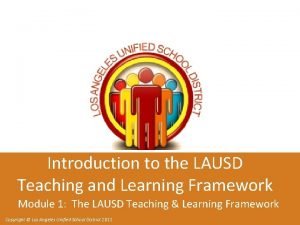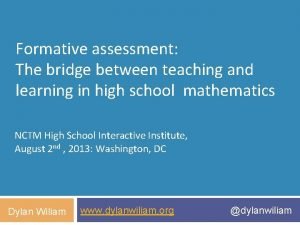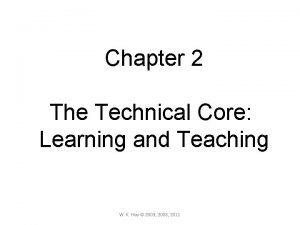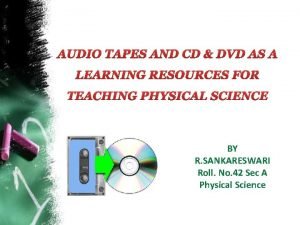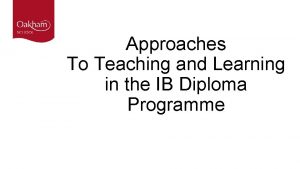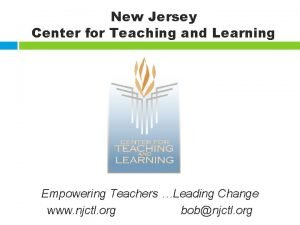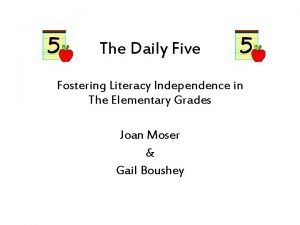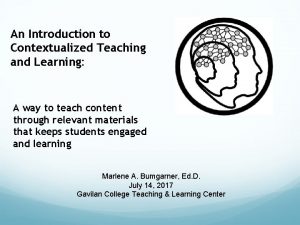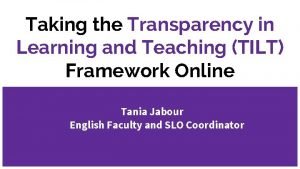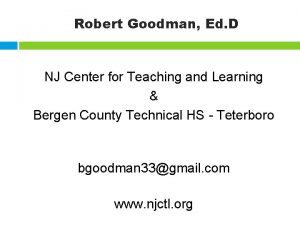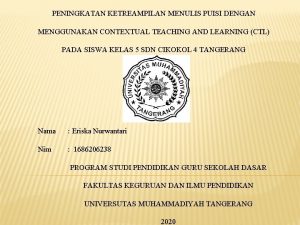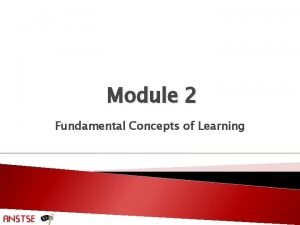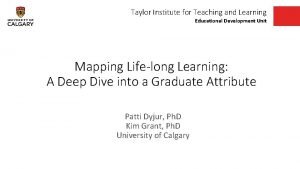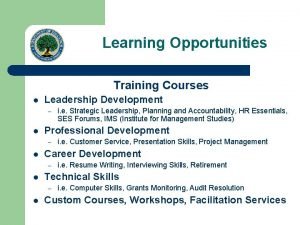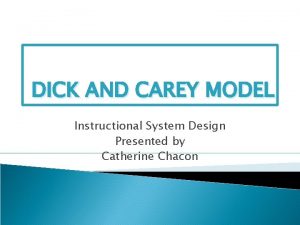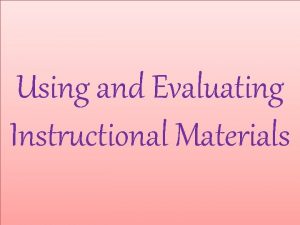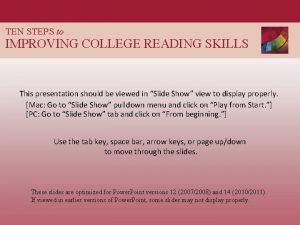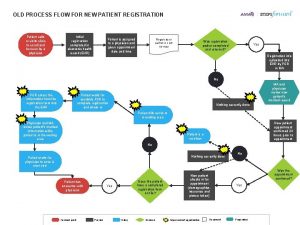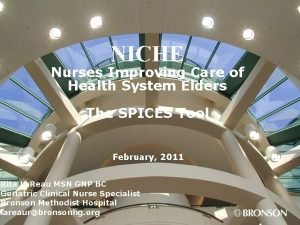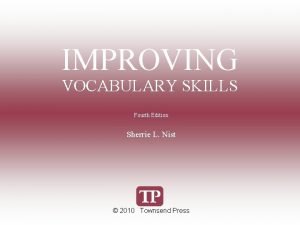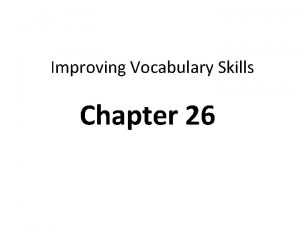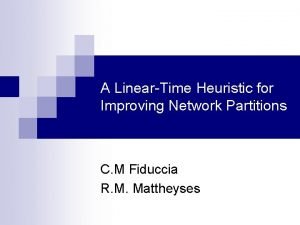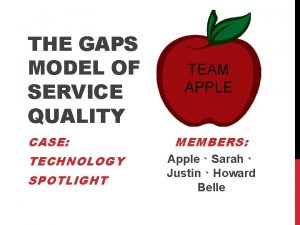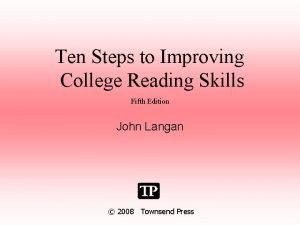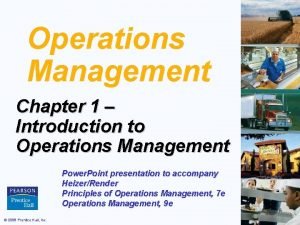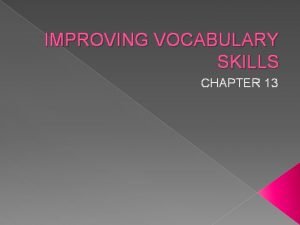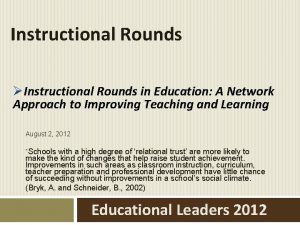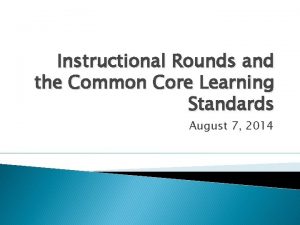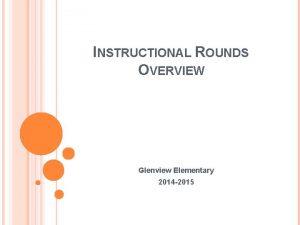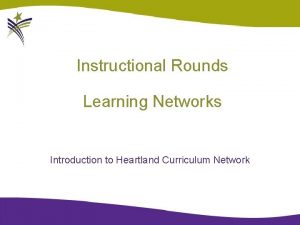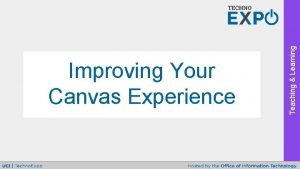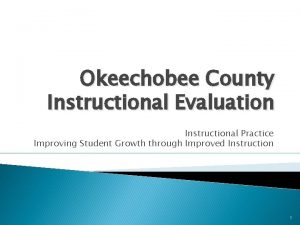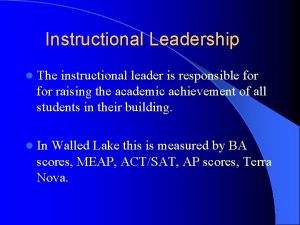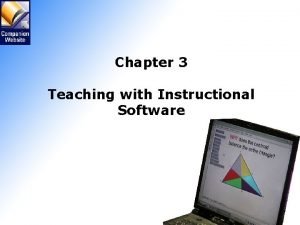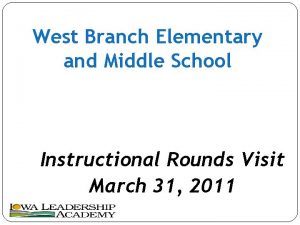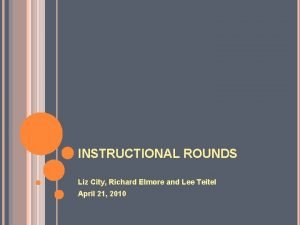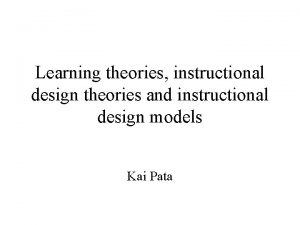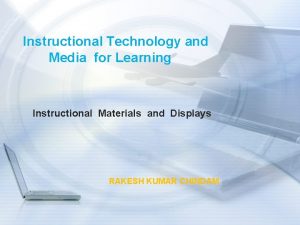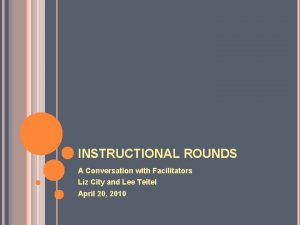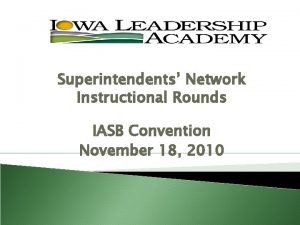Instructional Rounds Improving Learning Teaching and Leadership AASA






































































- Slides: 70

Instructional Rounds: Improving Learning, Teaching and Leadership AASA February 14, 2014 Joe Crozier, Grant Wood AEA, IA Sam Miller, Solon Community School District, IA Lora Wolff, Western Illinois University, IL 1

Contact us at: Joe Sam Lora Joe Crozier, jcrozier@gwaea. org Sam Miller, Solon Smiller@solon. k 12. ia. us Lora Wolff, ll. L-wolff@wiu. edu 2

In this session we will… • Increase our knowledge and skills to use data to improve learning environments • Understand the various purposes walkthroughs • Learn about using technology to collect and analyze walkthrough data • Consider the place of walkthroughs with the new evaluation system 3

Please interrupt, ask questions, and share your insights as we talk today. 4

Goals of Instructional Rounds Ø Build skills of network members by coming to a common understanding of effective practice and how to support it. Ø Support instructional improvement at the host school by sharing what the network learns and by building skills at the local level. 5

An Instructional Rounds Network • • Is A learning community A method to examine the system A method to analyze student learning and student tasks An in-depth analysis of the instructional core observed in classrooms A process A way for network members to objectively describe teaching and learning Developing, through shared experiences in real classrooms, a common understanding of effective teaching practice and how to support it Collaboration to create coherence around instructional improvement at scale Is Not • Learning in isolation • A method to evaluate teachers and principals • An instructional audit to determine if teachers are engaging in a specific practice • A “walkthrough” • A program • A way for network members to learn supervision skills • Reading about or listening to someone describe effective teaching practice and how to support it • Working alone to “figure it out” for one’s own system 6

Comparison of Rounds and Walkthroughs Rounds • Addresses a problem of practice • Descriptive-analytic-predictive mode • Develops common norms of practice • Part of a broader improvement strategy • Builds a theory of action • Evidence-based, nonjudgmental • Identifies patterns across classrooms Walk-through • Checks for implementation of district programs • Normative mode (looking for something preconceived) • Assesses presence-absence of practices (‘there’ or ‘not there’) • Evaluative • Specific to a single classroom 7

Why do rounds? Equity—To ensure that ALL children have access to powerful learning no matter which classroom they are in Knowledge—To understand what kind of learning is happening in your system Group capacity—To build a shared language and understanding of powerful learning and teaching 8

The Instructional Core CONTENT TASK TEACHER STUDENT The relationship between the teacher and the student in the presence of content 9 9

The Instructional Core Student Principle 1: Increases in student learning occur only as a consequence of improvements in the level of content, teachers’ knowledge and skill, and student engagement. Principle 2: If you change one element of the instructional core, you have to change the other two. Tas k Teacher Content Principle 3: If you can’t see it in the core, it’s not there. Principle 4: Task predicts performance. Principle 5: The real accountability system is in the tasks that students are asked to do. Principle 6: We learn to do the work by doing the work. Principle 7: Description before analysis, analysis before prediction, prediction before evaluation. In Chapter 1, Instructional Rounds in Education 10

Graphical overview of rounds process OBSERVATION/DESCRIPTION PROBLEM OF PRACTICE NEXT LEVEL OF WORK THEORY OF ACTION ANALYSIS: THEMES/PATTER NS PREDICTION: “IF YOU WERE A STUDENT. . . WHAT WOULD YOU KNOW & BE ABLE TO DO. . ? ” 11

Sample Problem of Practice After some initial growth in literacy and math performance, recently student performance on both benchmark and state tests is flattening. Most students are passing, but only half of the students are in the “proficient” category, with few in “advanced” on the state test. We may not be challenging students sufficiently in their daily work. What tasks are students being asked to do? What questions do you hear? 12

Observing and Describing the Learning Task • Look down, not up • What are students actually doing? (not what the teacher thinks s/he is asking them to do) • Task predicts performance 13

What superintendents are saying… Ø I am skilled at using evidence to discuss and analyze observation data. 97% Ø I learn better ways to improve instruction in my district by working with others from outside my district. 82% Ø I value collaborating with other superintendents to improve teaching and learning. 97% “Superintendents can be and need to be instructional leaders. ” Iowa superintendent 14

The Rounds Process • My first experience with Instructional Rounds was serving on a team with twelve superintendents and Area Education Agency personnel. • As part of the team, I visited a dozen school districts and observed many lessons while using the structured protocols of the Instructional Rounds process. • I also experienced hosting Instructional Rounds in my school district. By hosting, our faculty and administration were able to experience the process and receive feedback on our instructional practices. 15

The Rounds Process • Four years ago, I became the superintendent of the Solon Community School District in Solon, Iowa (located between Iowa City and Cedar Rapids). • During the 2011 -12 and 2012 -13 school years, we implemented structured walk-throughs using a template we designed that was utilized through i. Pads. • Each teacher received at least 15 walk-throughs per year including: – 9 from building Principal – 3 from Director of Instruction – 3 from Superintendent • Feedback from teachers included appreciation for visibility in classrooms, but feedback was having little impact on Instruction. 16

The Rounds Process • For the 2013 -14 year, in an effort to provide our teachers with more meaningful feedback, we implemented Instructional Rounds. • Every member of the administrative team agreed to fully participate in the process, including participating in professional development to better understand the structured protocols of the Instructional Rounds process. • Additionally, team members agreed to reserve one day each month for Instructional Rounds. This was non-negotiable. 17

The Rounds Process • We started our Instructional Rounds journey by participating in a book study over the summer months. 18

The Rounds Process • We provided additional professional development in August: 19

The Rounds Process • We watched sample videos to practice note taking and debriefing when given a specific Problem of Practice. 20

The Rounds Process • Getting Started! • The process is very organized including: • A posted schedule 21

The Rounds Process • Organizing teams for classroom visits 22

The Rounds Process • Observation tool 23

The Rounds Process • Debriefing and Next Level of Work • Please note: building principal shares data with staff. 24

The Rounds Process • Communicating Instructional Rounds – Faculty – Board of Education – Community – Twitter, Blogs, Newsletter 25

The Rounds Process • Analysis • Early feedback indicates teachers appreciate a building wide focus that “feels like” coaching and not evaluative. • Some staff still freaked out by seeing multiple administrators walking into their classroom for observation. • Surveys will be administered to all teachers in spring for input and improvement. • Administration thinks the process has improved our commitment and focus on teaching and learning. 26

Impact of Instructional Rounds • Benefitted from working with other superintendents with a focus on learning • Confirmed what I knew and believed about learning in my district • Challenged my thinking about learning in my district • Forced me to consider the instructional leadership roles of the administrative team • Implemented team walk throughs by the administrative team 27

Why a team approach? • Demonstrates instructional leadership • Generates the conversation about instruction and curriculum • Provides a structure that collects data about teaching and learning • Acts as a springboard for professional development based on data collected • Provides a vehicle to implement sustained school improvement • Helps educators become reflective 28

Where we began… • Began with walkthroughs • Incorporated instructional rounds characteristics – Utilized a “team approach” – Focused on what the students were doing – Focused on analyzing what was observed • Utilized technology 29

Why use technology? • Wanted documentation of the number of e. Walks completed – – – By each administrator By teacher By classroom By grade level By content area By building • Wanted consistency in what we were observing (administrators, teachers) • Wanted to be able quantify and display 30 data

A Team Administrative Schedule 31

Benefit of Using Technology • Collecting data • Displaying data • Analyzing data 32

Observer Report: Hawthorne 2010 -2011 -2012 33

Areas of Observation • • • Students and Learning Teacher Proximity Learning Environment Curriculum Instructional Strategies 20 Instructional Strategies (Marcia Tate) Implementation of Specific Curriculum Training Reading Strategies Instructional Software Technology Second Chance Reading Classroom Management 34

Category: Students and Learning 35

Template Category: Students and Learning (graph) 36

Heading into Year 3 • Move from only walkthroughs to instructional rounds • Focus on conversations about the visits with teachers • Regular administrative team conversations about what we’re seeing as a district or building. • Provide professional development for administrators in instructional rounds 37

Questions/Comments Contact us at: Joe Crozier, joe. crozier@gmail. com Sam Miller, Solon smiller@solon. k 12. ia. us Lora Wolff, ll-wolff@wiu. edu 38

BONUS SLIDES 39

Demonstration of an e. Walk 40

Observer Report: George Washington 2010 -2011 -2012 41

Observer Report: Wells-Carey 2010 -2011 42

Observer Report: Keokuk Middle School 2010 -2011 -2012 43

Observer Report: Keokuk High School 2010 -2011 -2012 44

Template Category: Teacher Proximity 45

Template Category: Learning Environment 46

Template Category: Curriculum 47

Template Category: Instructional Strategies (CITW) 48

Template Category: 20 Instructional Strategies (Marcia Tate) 49

Template Category: Implementation of Specific Curr. Trainings 50

Template Category: Reading Strategies 51

Template Category: Utilization of Instructional Software 52

Template Category: Technology 53

Template Category: Second Chance Reading 54

Template Category: Classroom Management 55

Template Category: Teacher Proximity (graph) 56

Template Category: Learning Environment (graph) 57

Template Category: Curriculum (graph) 58

Template Category: Instructional Strategies (CITW) (graph) 59

Template Category: 20 Instructional Strategies (Marcia Tate) 60

Template Category: Implementation of Specific Curriculum. Trainings (graph) 61

Template Category: Reading Strategies (graph) 62

Template Category: Utilization of Instructional Software(graph) 63

Template Category: Technology (graph) 64

Template Category: Second Chance Reading (graph) 65

Template Category: Classroom Management (graph) 66

Involving Teachers in Walk. Throughs • Question: Should we involve teachers in conducting walkthroughs? • Question: If so, how do we involve teachers in walkthroughs? Another perspective Engaging Teachers in Classroom Walkthroughs, Kachur et al 67

QUESTIONS TO PONDER… What role could walkthroughs and/or e. Walks play… …in the curriculum? …in the Common Core? …in your school or district? …in the evaluation process? 68

Other Information • Ability to email reports (and walk throughs) —my bias is not to do this You can type in an email address here You can type in comments here…or maybe reflective questions… You can type in an email address here 69

A bit of tragic humor… 70
 Harvard instructional rounds
Harvard instructional rounds Ain aasa
Ain aasa Quality teaching rounds coding sheet
Quality teaching rounds coding sheet Using assessment data for improving teaching practice
Using assessment data for improving teaching practice Improving own learning and performance examples
Improving own learning and performance examples Improving student learning one teacher at a time
Improving student learning one teacher at a time Improving student learning one teacher at a time
Improving student learning one teacher at a time Conventional dimensioning
Conventional dimensioning Instructional learning cycle
Instructional learning cycle Instructional learning cycle
Instructional learning cycle Instructional learning cycle
Instructional learning cycle Utmb grand rounds
Utmb grand rounds 75 rounded to the nearest ten
75 rounded to the nearest ten What do you call a stubborn angle
What do you call a stubborn angle 5 layers of neurosis gestalt
5 layers of neurosis gestalt A is an odd number which rounds to 100 000
A is an odd number which rounds to 100 000 Maintenance rounds
Maintenance rounds Schwartz rounds facilitator training
Schwartz rounds facilitator training Sam rounds
Sam rounds Red, white & blue bite size rounds tortilla chips
Red, white & blue bite size rounds tortilla chips Readiness rounds
Readiness rounds Anatomy of a bullet
Anatomy of a bullet Duke medicine grand rounds
Duke medicine grand rounds Nursing grand rounds presentation example
Nursing grand rounds presentation example Micro teaching meaning
Micro teaching meaning Transactional leadership vs transformational leadership
Transactional leadership vs transformational leadership Cuadro comparativo de e-learning b-learning y m-learning
Cuadro comparativo de e-learning b-learning y m-learning Adaptive leadership
Adaptive leadership Capable but cautious performer
Capable but cautious performer Improving service quality and productivity ppt
Improving service quality and productivity ppt Quality business a level
Quality business a level Aliens meaning
Aliens meaning Improving vocabulary with word parts and context clues
Improving vocabulary with word parts and context clues Improving decision making and managing knowledge
Improving decision making and managing knowledge Appetitive faculties of the learner
Appetitive faculties of the learner New jersey center for teaching and learning
New jersey center for teaching and learning How many total squares are there
How many total squares are there Guiding principles for teaching and learning in mtb-mle
Guiding principles for teaching and learning in mtb-mle Teaching learning framework lausd
Teaching learning framework lausd Assessment the bridge between teaching and learning
Assessment the bridge between teaching and learning Technical core: teaching and learning
Technical core: teaching and learning Advantages of tape recorder in teaching and learning
Advantages of tape recorder in teaching and learning Ib approaches to learning
Ib approaches to learning Www.njctl.org answer key
Www.njctl.org answer key 10 steps to teaching and learning independence
10 steps to teaching and learning independence Impact of assure model to students
Impact of assure model to students Contextualized learning
Contextualized learning Tilt assignment template
Tilt assignment template Nj center for teaching and learning
Nj center for teaching and learning Contextual teaching and learning
Contextual teaching and learning Thpes of learning
Thpes of learning Taylor institute for teaching and learning
Taylor institute for teaching and learning Leadership learning and development
Leadership learning and development Dick and carey
Dick and carey Concept of instructional technology
Concept of instructional technology Hayden smith and thomas nagel
Hayden smith and thomas nagel Ten steps to improving college reading skills 6th edition
Ten steps to improving college reading skills 6th edition Patient registration process flowchart
Patient registration process flowchart Bronson intranet
Bronson intranet Improving vocabulary skills 4th edition
Improving vocabulary skills 4th edition Is drivers a verb
Is drivers a verb Improving software economics set 1
Improving software economics set 1 Chapter 12 lesson 2 improving your fitness
Chapter 12 lesson 2 improving your fitness Improving software economics set 1
Improving software economics set 1 A linear-time heuristic for improving network partitions
A linear-time heuristic for improving network partitions Listening gap examples
Listening gap examples Ten steps to advancing college reading skills
Ten steps to advancing college reading skills Collins title productivity
Collins title productivity Chapter 13 matching words with definitions
Chapter 13 matching words with definitions A sense of belonging improving student retention
A sense of belonging improving student retention Behavioral assessment scale for intercultural competence
Behavioral assessment scale for intercultural competence


